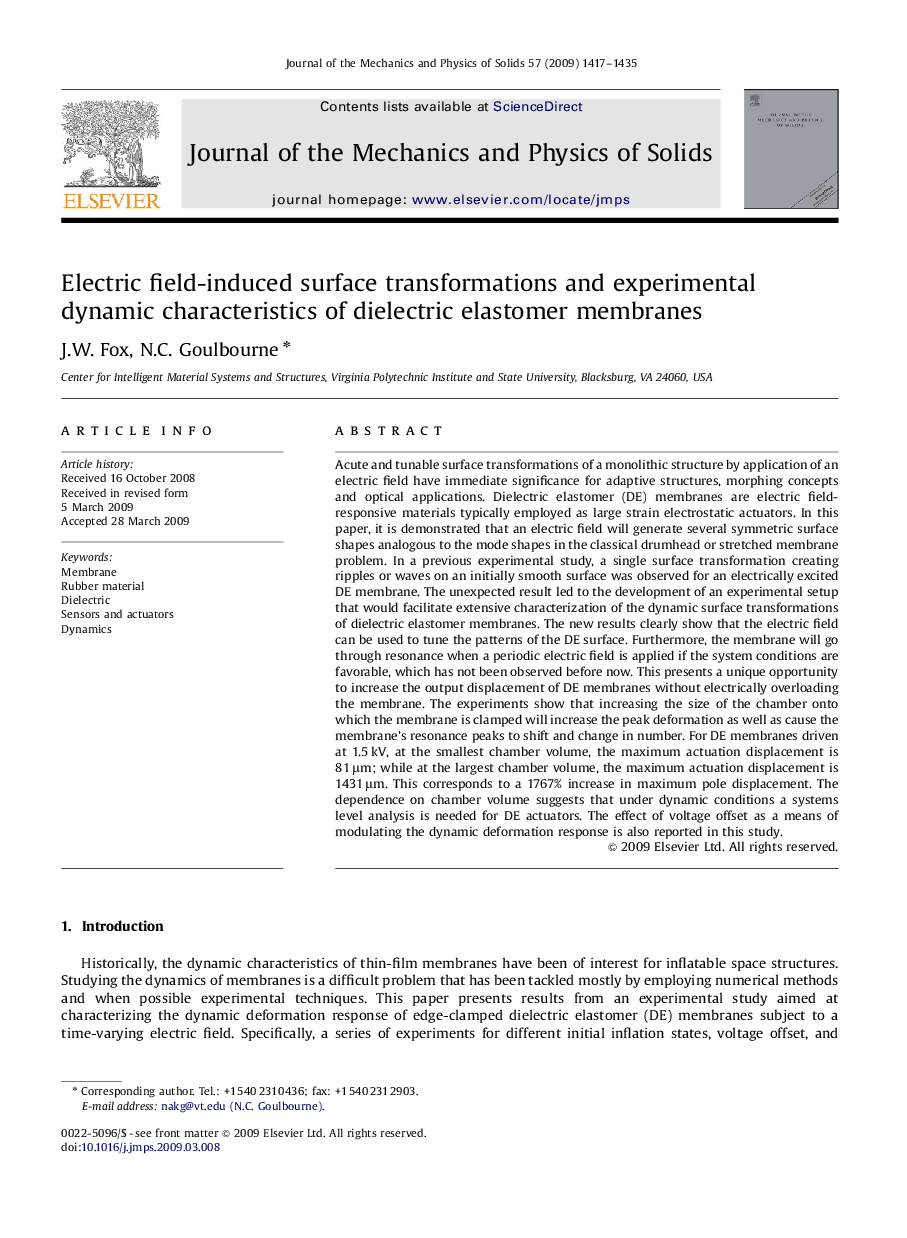| Article ID | Journal | Published Year | Pages | File Type |
|---|---|---|---|---|
| 798284 | Journal of the Mechanics and Physics of Solids | 2009 | 19 Pages |
Acute and tunable surface transformations of a monolithic structure by application of an electric field have immediate significance for adaptive structures, morphing concepts and optical applications. Dielectric elastomer (DE) membranes are electric field-responsive materials typically employed as large strain electrostatic actuators. In this paper, it is demonstrated that an electric field will generate several symmetric surface shapes analogous to the mode shapes in the classical drumhead or stretched membrane problem. In a previous experimental study, a single surface transformation creating ripples or waves on an initially smooth surface was observed for an electrically excited DE membrane. The unexpected result led to the development of an experimental setup that would facilitate extensive characterization of the dynamic surface transformations of dielectric elastomer membranes. The new results clearly show that the electric field can be used to tune the patterns of the DE surface. Furthermore, the membrane will go through resonance when a periodic electric field is applied if the system conditions are favorable, which has not been observed before now. This presents a unique opportunity to increase the output displacement of DE membranes without electrically overloading the membrane. The experiments show that increasing the size of the chamber onto which the membrane is clamped will increase the peak deformation as well as cause the membrane's resonance peaks to shift and change in number. For DE membranes driven at 1.5 kV, at the smallest chamber volume, the maximum actuation displacement is 81 μm; while at the largest chamber volume, the maximum actuation displacement is 1431 μm. This corresponds to a 1767% increase in maximum pole displacement. The dependence on chamber volume suggests that under dynamic conditions a systems level analysis is needed for DE actuators. The effect of voltage offset as a means of modulating the dynamic deformation response is also reported in this study.
